Haiti
Welcome to Haiti
Welcome to Haiti, the vibrant “Pearl of the Antilles,” where natural beauty, rich history, and resilient culture converge to create one of the Caribbean’s most captivating destinations. Whether you’re drawn by turquoise waterfalls, imposing mountaintop fortresses, or the infectious rhythms of Carnival, Haiti promises an adventure that is as rewarding as it is unique.
Haiti is a country that defies expectations. Nestled on the western third of Hispaniola, it shares the island with the Dominican Republic but offers a distinctly different experience. Haiti’s landscape is a tapestry of lush mountains, white-sand beaches, and bustling cities. Its history is equally dramatic: the first independent Black republic in the world, Haiti is a land shaped by revolution, creativity, and a profound sense of pride.
Despite challenges, Haiti’s spirit endures. Visitors are welcomed with warmth and curiosity, and those who venture here are treated to a side of the Caribbean that remains largely untouched by mass tourism. From the pastel-painted streets of Jacmel to the awe-inspiring Citadelle Laferrière, Haiti is a destination for travelers who crave authenticity and discovery.
Why Visit Haiti?
1.
A Living Tapestry of History and Culture
Haiti’s story is one of resilience and triumph. Explore UNESCO-listed fortresses like the Citadelle Laferrière, wander through the ruins of Sans Souci Palace, and experience a culture alive with music, art, and festivals. Haiti’s annual Carnival is a riot of color and sound, drawing visitors from around the world to celebrate its vibrant traditions.
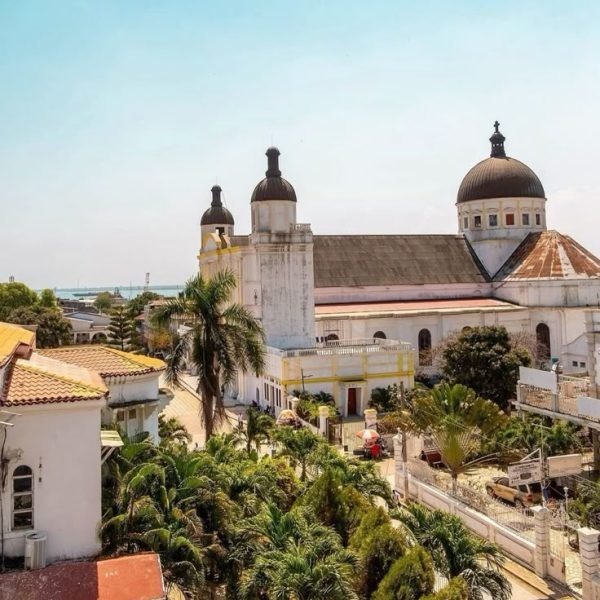
2.
Untamed Natural Beauty
Haiti dazzles with its natural wonders. Swim in the crystalline pools of Bassin-Bleu, hike to thundering waterfalls like Saut-Mathurine, or unwind on the postcard-perfect beaches of Labadie and Île à Rat. Adventure seekers and nature lovers will find endless opportunities to explore, from underground caves to botanical gardens teeming with biodiversity.
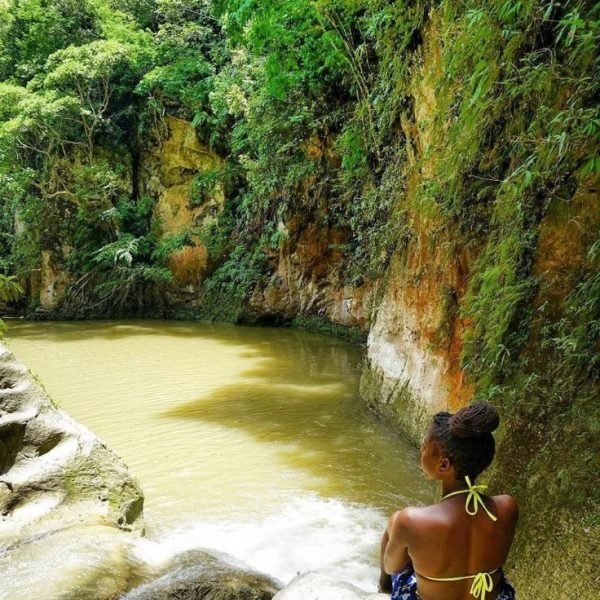
Planning Your Trip
Visa Information
Haiti has a welcoming visa policy for most travelers. Citizens of many countries, including the United States, Canada, and Schengen states, can enter Haiti visa-free for up to three months, provided they hold a passport valid for at least six months beyond their arrival date. For travelers from certain countries-such as Vietnam, Cuba, Colombia, Libya, Panama, Syria, the Dominican Republic, Yemen, and Iran-a visa must be obtained in advance from a Haitian embassy. Some nationalities may also be eligible for a visa on arrival, which requires filling out an application and paying a processing fee at the airport. If you plan to stay longer than three months, you will need to apply for an extended visa through the Haitian embassy.
Best Time to Visit
The best time to visit Haiti is during the dry season, which runs from November to March. This period follows the end of hurricane season and offers sunny, comfortable weather ideal for sightseeing, outdoor adventures, and beach relaxation. The months of February and March are especially lively, as the country comes alive with Carnival celebrations and cultural festivals. While Haiti can be visited year-round, the rainy season (April to October) brings heavier showers and the risk of hurricanes, particularly from August to October.
Getting To and Around
Getting to Haiti
Most international travelers arrive in Haiti via Toussaint Louverture International Airport in Port-au-Prince, the nation’s capital. Direct flights connect Haiti to major cities such as Miami and New York, as well as select destinations in Canada and France. Overland entry is possible from the Dominican Republic, with direct bus services linking Santo Domingo and Port-au-Prince. Cruise ships also dock at Labadie, a private resort area on Haiti’s northern coast, popular for its beaches and water sports.
Getting Around Haiti
Travel within Haiti is an adventure in itself. The country’s compact size makes it easy to explore multiple regions, though infrastructure can be challenging in some areas.
- Domestic Flights: For longer distances, domestic flights operated by Sunrise Airways connect major cities like Port-au-Prince and Cap-Haïtien. These short flights are efficient and offer stunning aerial views of Haiti’s mountainous terrain.
- Road Travel: Buses and minibuses serve intercity routes. For a truly local experience, hop on a tap-tap-Haiti’s iconic, brightly painted shared taxis. These vehicles are inexpensive and a quintessential part of Haitian life, though they can be crowded and operate on flexible schedules.
- Car Rentals: Renting a car is possible in major cities, but driving in Haiti requires confidence and patience due to variable road conditions and traffic.
- Taxis and Motorbikes: Taxis and motorcycle taxis are widely available for short trips within cities and towns.
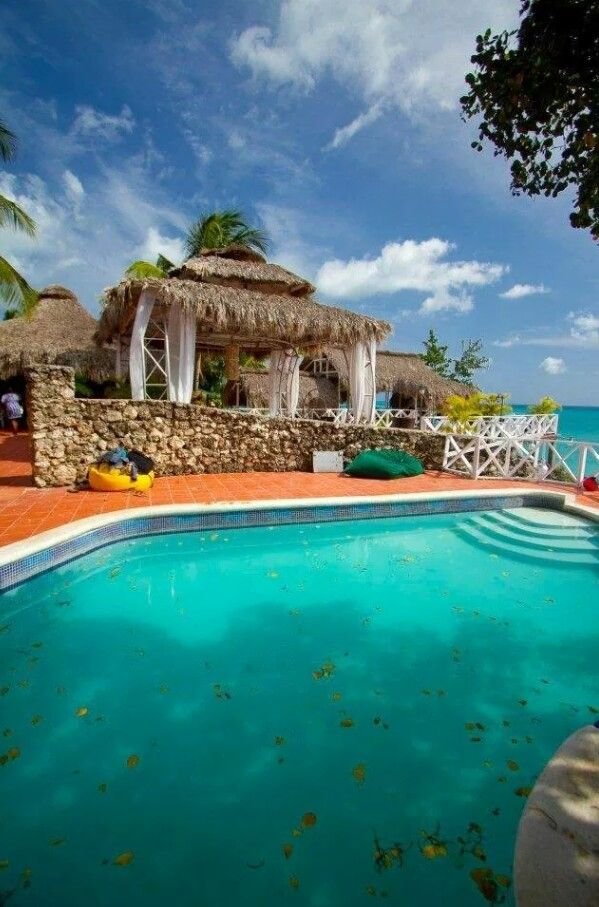
Accommodation
Haiti’s accommodation scene is as varied as its landscape, offering options for every type of traveler and budget. Whether you’re seeking the charm of a historic hotel, the comfort of a modern resort, or the warmth of a local guesthouse, you’ll find a place that suits your style and needs.
Hotels: From Historic to Contemporary
Major cities like Port-au-Prince, Cap-Haïtien, Jacmel, and Petionville host a selection of hotels ranging from affordable to upscale. For those interested in history and culture, properties such as Hotel Florita in Jacmel and Hôtel du Roi Christophe in Cap-Haïtien offer a blend of colonial architecture, local art, and modern amenities. These hotels often feature on-site restaurants, bars, and even nightclubs, providing a lively atmosphere for guests.
In Port-au-Prince, options like the Hotel Oloffson and Le Plaza Hotel are popular for their central locations, unique character, and welcoming staff. Many hotels include perks such as complimentary breakfast, outdoor pools, and free WiFi, making them ideal for both leisure and business travelers. Well-known international chains, including Marriott Port-au-Prince Hotel, bring a touch of global comfort, complete with gyms, business centers, and airport shuttles.
Beach Resorts and All-Inclusive Retreats
For a true Caribbean escape, Haiti’s coastal resorts such as Moulin Sur Mer in Saint-Marc and Cap Lamandou Hotel in Jacmel offer private beaches, marinas, and a host of water activities. These resorts are perfect for families and couples, with amenities like children’s pools, mini golf, and beachfront dining. All-inclusive packages are available in some locations, allowing guests to relax and enjoy their stay without worrying about the details.
Guesthouses and Boutique Stays
Travelers seeking a more intimate experience should consider Haiti’s numerous guesthouses and boutique lodges. In Port-au-Prince, options like Star House, Duen Hotel, and Backpackers Haiti provide a cozy atmosphere, often with rooftop terraces, complimentary breakfast, and friendly hosts eager to share local tips. Many guesthouses are family-run, offering a unique opportunity to connect with Haitian culture and hospitality.
For those venturing beyond the capital, guesthouses such as Kiskeya Guest House in Léogâne and L’Anse à L’eau Beach House on Île-à-Vache offer tranquil settings close to nature. These accommodations frequently include home-cooked meals, guided tours, and easy access to local attractions.
Vacation Rentals and Long-Stay Options
Haiti also caters to travelers planning extended stays or seeking more independence. Apartments, villas, and holiday homes are available in major towns and scenic rural areas. These options are ideal for families, groups, or anyone wanting the flexibility of self-catering and more space.
Budget-Friendly Choices and Booking and Tips
Budget-Friendly Choices
Backpackers and budget travelers will find affordable hostels and simple lodges, especially in Port-au-Prince and Cap-Haïtien. These accommodations offer basic comforts, shared facilities, and a chance to meet fellow travelers. Prices can start as low as $28 a night, making Haiti accessible for those exploring on a shoestring.
Booking and Tips
It’s advisable to book accommodations in advance, especially during peak travel seasons or festivals. Many properties offer free parking and WiFi, and some include airport transfers. When booking, check for amenities that matter most to you-such as breakfast, pool access, or proximity to major sights.
Wherever you choose to stay, expect genuine Haitian hospitality and a memorable experience that goes beyond the ordinary.

Food and Drink
Haitian cuisine is a vibrant fusion of African, French, Spanish, and indigenous influences, resulting in dishes that are bold, hearty, and deeply satisfying. Eating in Haiti is not just about sustenance-it’s a celebration of flavor, tradition, and community.
Signature Dishes to Try
- Soup Joumou: This iconic pumpkin soup is a symbol of Haitian independence and is traditionally enjoyed on January 1st. Made with squash, beef, vegetables, and pasta, it’s rich, aromatic, and deeply meaningful.
- Griot: Perhaps Haiti’s most beloved dish, griot consists of marinated pork cubes, slow-cooked until tender, then fried until crispy. It’s typically served with fried plantains (bannann peze) and spicy pickled cabbage known as pikliz.
- Diri a Djondjon: A fragrant black mushroom rice, often paired with seafood or chicken, this dish showcases Haiti’s unique use of local ingredients.
- Diri Sòs Pwa: Rice and bean sauce, often accompanied by stewed vegetables or meat, is a staple of everyday Haitian meals.
- Mayi Moulen ak Sòs Pwa: Creamy cornmeal served with a savory bean sauce, sometimes topped with stewed chicken or fish.
- Macaroni au Gratin: A Haitian twist on the classic baked macaroni and cheese, often enriched with ham, vegetables, and a blend of local spices.
- Cabri en Sauce: Goat meat stewed in a richly seasoned sauce, typically reserved for special occasions and celebrations.
- Bouyon: A hearty soup made with root vegetables, plantains, dumplings, and meat or fish, perfect for a filling lunch or dinner.
- Fritay: A popular street food platter featuring a medley of fried meats, plantains, and accra (malanga fritters).
Street Food and Snacks
Haitian street food is a must for adventurous eaters. Pate Kòde (savory turnovers filled with meat or fish), marinad (spiced fritters), and banan peze are ubiquitous at roadside stands and markets. For a quick bite, try boulettes (meatballs), tassot (crispy dried beef or goat), or a fresh slice of pain patate (sweet potato pudding).
Desserts and Sweets
End your meal with traditional treats like bonbon sirop (spiced gingerbread cookies), douce macoss (coconut candy), or a serving of pain patate. Fruit lovers will delight in fresh mangoes, papayas, and soursop, often enjoyed as juices or smoothies.
Drinks: From Coffee to Rum
Haiti is renowned for its robust, aromatic coffee, grown in the country’s mountainous regions. Enjoy it black or with a touch of sugar, often served alongside breakfast or as an afternoon pick-me-up.
For something stronger, sample Haiti’s famous Barbancourt rum, a spirit with a rich, smooth flavor that’s perfect neat or in cocktails. Local beers like Prestige are widely available and pair well with spicy Haitian fare.
Fresh juices made from local fruits-such as passionfruit, tamarind, or grenadia-are refreshing and plentiful. Don’t miss the chance to try a glass of kleren, a traditional sugarcane spirit, for a true taste of Haiti’s artisanal beverage culture.
Where to Eat
Haiti’s dining scene ranges from lively street stalls to elegant restaurants. In cities like Port-au-Prince, Jacmel, and Cap-Haïtien, you’ll find a mix of local eateries, international restaurants, and hotel dining rooms. Many guesthouses and hotels offer home-style Haitian meals, giving travelers a chance to savor authentic flavors in a relaxed setting.
Food and drink tours are also popular, offering guided tastings of local specialties, visits to markets, and even rum distillery tours. These experiences provide insight into the culinary traditions that define Haitian life.
Dietary Considerations and Etiquette
Haitian cuisine is generally meat-centric, but vegetarian options can be found, especially in vegetable stews, rice dishes, and street snacks. Meals are often communal, and sharing food is a cherished part of Haitian hospitality.
When dining out, tipping is customary-typically 10% if service is not included. Don’t hesitate to ask locals or hosts for recommendations; Haitians take pride in their food and are eager to share their favorites.
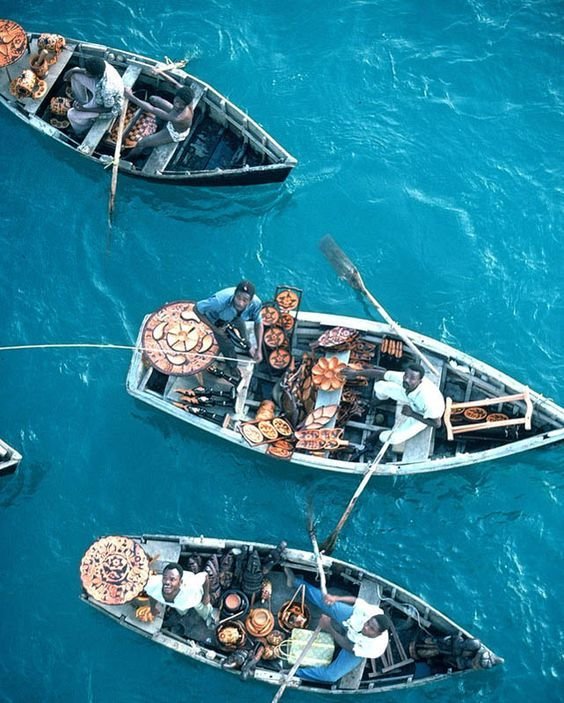
Must-See Attractions
Haiti is a treasure trove of historical landmarks, natural wonders, and cultural sites that offer a deep dive into the country’s rich heritage and stunning landscapes. For 2025 travelers, these must-see attractions provide a perfect blend of adventure, education, and breathtaking beauty.
Citadelle Laferrière
Standing as a proud symbol of Haitian independence, the Citadelle Laferrière is the largest fortress in the Western Hemisphere. Perched 910 meters above sea level near Cap-Haïtien, this massive stone fortress was built in the early 19th century to defend against French colonial forces. Visitors can explore its towering walls, 365 cannons, and vast courtyards while soaking in panoramic views of the surrounding mountains and valleys. The Citadelle’s imposing architecture and historical significance make it an unmissable highlight.
Sans Souci Palace
Located near the Citadelle, the Sans Souci Palace was once the royal residence of King Henri Christophe, a key leader in Haiti’s independence movement. Though now in ruins, the palace’s grandeur is still evident in its stone walls and terraces. The site offers a fascinating glimpse into Haiti’s royal past and revolutionary history, set against a backdrop of lush greenery and mountain vistas23.
Bassin-Bleu
Nature lovers will be enchanted by Bassin-Bleu, a series of three stunning waterfalls nestled in a tropical valley near Jacmel. The waterfalls cascade into pools of vivid blue water, perfect for swimming and cooling off after a scenic hike through the surrounding forest. The vibrant colors and serene atmosphere make Bassin-Bleu a favorite for photographers and adventurers alike.
Grotte Marie-Jeanne
For a subterranean adventure, Grotte Marie-Jeanne offers a spectacular cave system filled with impressive stalactites and stalagmites. Located in the mountains, this cave invites exploration of its mysterious underground chambers, with natural light filtering through cracks to create a magical ambiance. It’s an ideal destination for those fascinated by geology and natural history.
Labadie (Labadee)
A private resort area on Haiti’s northern coast, Labadie is famous for its pristine beaches, crystal-clear waters, and a wide array of water sports. Cruise ship visitors often disembark here to enjoy snorkeling, kayaking, zip-lining, and relaxing on white sands. Labadie combines natural beauty with well-developed tourist facilities, making it a perfect spot for both relaxation and adventure.
Cap-Haïtien City and Cathedral
The historic city of Cap-Haïtien offers charming colonial architecture, tree-lined boulevards, and vibrant markets. The Cap-Haïtien Cathedral, with its distinctive white facade and twin bell towers, stands proudly in the city center. Nearby, the city serves as a gateway to the Citadelle and Sans Souci Palace, making it an excellent base for exploring northern Haiti’s heritage.
Musée du Panthéon National Haïtien (MUPANAH)
Located in Port-au-Prince, MUPANAH is Haiti’s national museum dedicated to preserving the country’s revolutionary history and cultural identity. Housed in an 18th-century colonial building, the museum features exhibits on the Haitian Revolution, national heroes, and artifacts that tell the story of Haiti’s struggle for freedom and independence.
La Visite National Park and Pic Macaya
For ecotourism enthusiasts, La Visite National Park offers lush forests, mountain peaks, and diverse wildlife. The park includes Pic Macaya, Haiti’s second-highest peak at 2,347 meters, surrounded by cloud forests that are home to rare bird species and endemic plants. Hiking and cycling are popular activities here, providing immersive nature experiences.
Sugar Cane Historical Park
This unique park preserves the ruins of old sugar plantations and mills, offering insight into Haiti’s colonial past and the brutal history of slavery tied to the sugar industry. Visitors can learn about the economic and social impact of sugar cane cultivation and reflect on the resilience of Haitian people.
Île à Rat (Rat Island)
A small, picturesque island off the northern coast near Labadie, Île à Rat is a peaceful retreat with white sandy beaches, coral reefs, and vibrant marine life. It’s an ideal spot for snorkeling, swimming, and enjoying a quiet day away from the mainland’s bustle.
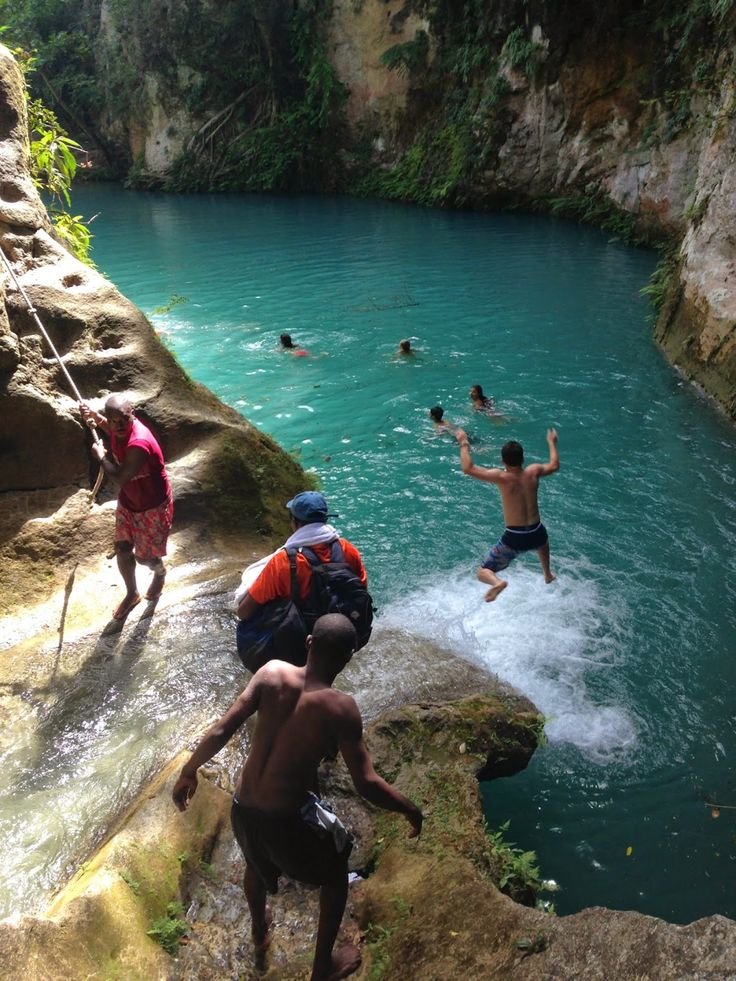
Must-Do Activities
Haiti offers a wealth of activities that allow travelers to engage with its culture, history, and natural environment in meaningful and exciting ways.
Explore the Citadelle and Sans Souci Palace
Climbing up to the Citadelle Laferrière and touring Sans Souci Palace are essential experiences. The hike to the fortress is rewarding, offering spectacular views and a sense of stepping back into history. Guided tours provide rich context about Haiti’s fight for independence and the architectural marvels of these sites.
Swim and Hike at Bassin-Bleu
A visit to Bassin-Bleu combines gentle hiking through tropical forests with refreshing swims in turquoise pools. The hike adds an adventurous element, while the waterfalls provide natural beauty and a perfect spot to relax. Many visitors enjoy picnics here or simply soaking in the peaceful surroundings.
Snorkeling and Water Sports in Labadie
Labadie’s calm, clear waters are perfect for snorkeling among coral reefs teeming with colorful fish. Kayaking, paddleboarding, and zip-lining over the beach are popular activities. For cruise passengers, day excursions here are a highlight, but independent travelers can also enjoy the area’s beaches and water sports.
Discover Haitian Art and Culture in Jacmel
Jacmel is a hub for artists and craftsmen. Strolling its streets, you can visit galleries, artisan workshops, and vibrant markets. The town’s colonial architecture and lively festivals, especially during Carnival, offer a rich cultural immersion. Don’t miss the chance to explore nearby beaches and waterfalls like Saut-Mathurine.
Visit MUPANAH Museum in Port-au-Prince
Delve into Haiti’s revolutionary history at the Musée du Panthéon National Haïtien. The museum’s exhibits provide a powerful narrative of Haiti’s fight for freedom and its cultural identity. It’s an educational experience that deepens understanding of the country’s past and present.
Hiking in La Visite National Park
For outdoor enthusiasts, hiking in La Visite National Park offers an escape into Haiti’s pristine natural environment. Trails wind through forests and up to mountain peaks, with opportunities to spot rare birds and enjoy panoramic views. The park is a key destination for eco-tourism and nature photography.
Explore the Village of Croix-des-Bouquets
Known for its metal art and voodoo-inspired sculptures, this village is a cultural gem. Visitors can tour workshops, meet artisans, and learn about the spiritual and artistic traditions that shape Haitian culture. It’s a unique way to connect with the local community and take home a meaningful souvenir.
Experience Haitian Festivals and Music
If your trip coincides with Carnival or other local festivals, immerse yourself in the vibrant celebrations filled with music, dance, and colorful costumes. Haitian rhythms like Kompa and Rara are infectious, and live performances can be found in cities and towns year-round.
Caving at Grotte Marie-Jeanne
Adventurous travelers should not miss exploring Grotte Marie-Jeanne’s underground chambers. Guided tours highlight the cave’s geological formations and the mystical atmosphere inside, providing a thrilling contrast to Haiti’s sunny landscapes.
Relax and Unwind on Île à Rat
For a laid-back day, take a boat trip to Île à Rat. Snorkel in its clear waters, lounge on its quiet beaches, and enjoy fresh seafood from local vendors. It’s a perfect escape to recharge amidst nature’s tranquility.
Haiti in 2025 invites travelers to explore its powerful history, vibrant culture, and stunning natural beauty through these unforgettable attractions and activities. Whether climbing ancient fortresses, swimming beneath waterfalls, or dancing to lively music, every experience here offers a deeper connection to the heart and soul of this remarkable Caribbean nation.
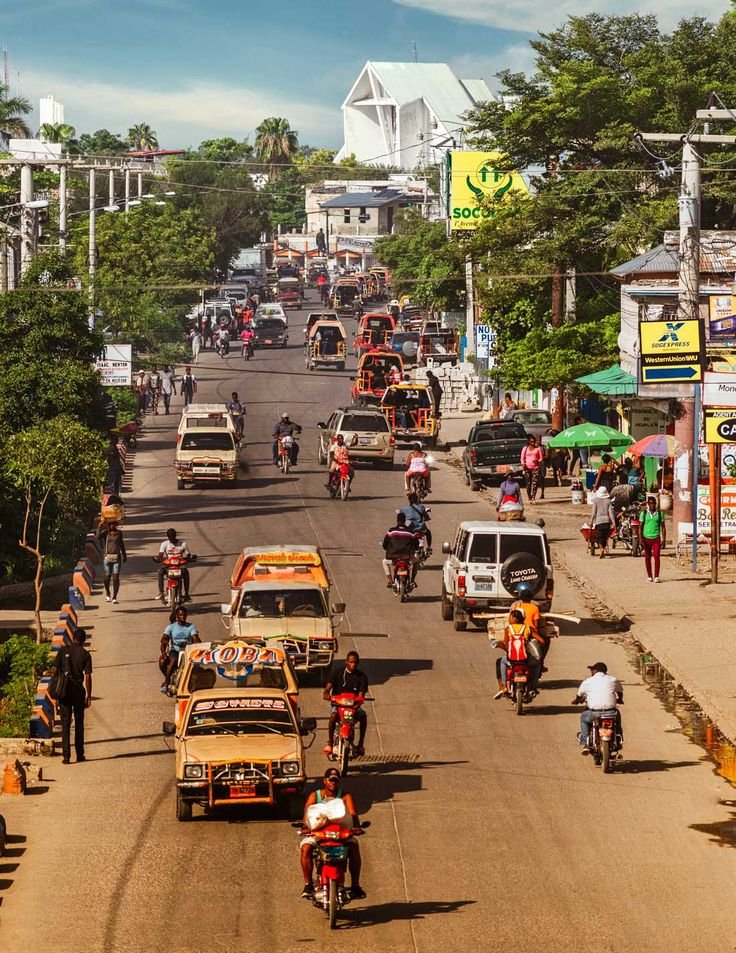
Travel Tips
Traveling to Haiti in 2025 requires careful preparation and heightened awareness due to the country’s complex security environment, unique cultural landscape, and linguistic diversity. This guide offers essential travel tips covering safety advice, local customs, and language basics to help you navigate Haiti respectfully and securely.
Serbia is a welcoming and vibrant destination, but like any country, it’s important to travel informed and prepared. Here’s what you need to know to make your 2025 trip safe, respectful, and enjoyable.
Safety Advice
Current Security Situation
Haiti faces significant challenges related to crime, civil unrest, and political instability. Many governments currently advise against non-essential travel to Haiti due to high risks of kidnapping, armed robbery, and violent crime, especially in and around Port-au-Prince and other urban centers. Gang activity is prevalent in several neighborhoods, and roadblocks or violent incidents can occur unpredictably. Travelers should monitor local news closely and avoid any areas where demonstrations or violence are reported.
Travel Precautions
- Avoid High-Risk Areas: Neighborhoods such as Bel Air, Carrefour, Cite Soleil, Martissant, and parts of Petion-Ville are known for gang violence and should be strictly avoided. Even some main roads, including routes to and from the airport, have been sites of carjackings and armed robberies.
- Limit Movement: Travel only during daylight hours and avoid walking alone, especially at night. Use only trusted, pre-arranged transportation rather than public transit or informal taxis. Public transportation, including the colorful “tap-taps,” is unsafe and unreliable.
- Stay Vigilant: Be alert to your surroundings at all times. Avoid displaying valuables like jewelry, cameras, or large amounts of cash. When using ATMs, do so only in secure locations such as hotel lobbies and never at night or alone.
- Secure Accommodations: Choose accommodations with good security measures, such as gated entrances and 24-hour staff. Avoid isolated areas and ensure your lodging has secure locks and, if possible, security personnel.
- Travel Insurance: Obtain comprehensive travel insurance that covers medical evacuation and emergency assistance. Healthcare infrastructure in Haiti is limited, and access to quality care may be difficult in emergencies.
- Women Travelers: Women face heightened risks and should avoid traveling alone or at night. It is advisable to have a trusted companion and to remain in well-secured areas.
Road and Transport Safety
Traffic conditions in Haiti are chaotic and dangerous. Roads are often poorly maintained and unmarked, with drivers frequently ignoring traffic laws. Overloaded vehicles, erratic driving, and lack of street lighting increase the risk of accidents. If you plan to drive, hire a professional driver familiar with local conditions and always wear seatbelts. Avoid traveling by ferry unless safety standards are verified, and never board overcrowded or poorly maintained vessels.
Local Customs
Respect and Hospitality
Haitians are known for their warmth and hospitality. Greeting people politely and showing respect for local traditions goes a long way. A simple “Bonjou” (Good morning) or “Bonswa” (Good evening) when meeting someone is appreciated.
Social Etiquette
- Dress Modestly: Especially outside tourist resorts, dress modestly and avoid flashy clothing or accessories that might attract unwanted attention.
- Photography: Always ask permission before photographing people, especially in rural areas or at religious ceremonies.
- Gift Giving: Small gifts or tokens of appreciation, such as school supplies or food items, are welcomed in some communities but should be given thoughtfully and respectfully.
- Voodoo Culture: Haiti’s voodoo religion is an integral part of its cultural fabric. While it may be unfamiliar to many visitors, approach it with respect and curiosity rather than judgment or sensationalism.
Tipping
Tipping is customary in restaurants, hotels, and for guides or drivers. A 10% tip is standard if service is not included in the bill.
Currency and Bargaining
The Haitian Gourde is the official currency, but US dollars are widely accepted in tourist areas. When shopping at markets or hiring services, bargaining is common and expected. Always negotiate prices upfront to avoid misunderstandings.
Language Basics
Official Languages
Haiti has two official languages: Haitian Creole and French. Haitian Creole is the most widely spoken language and is used in everyday conversation by nearly all Haitians. French is used in formal settings, government, education, and business.
Useful Haitian Creole Phrases
- Bonjou – Good morning
- Bonswa – Good evening
- Mèsi – Thank you
- Tanpri – Please
- Kijan ou ye? – How are you?
- Wi / Non – Yes / No
- Konbyen sa koute? – How much does this cost?
- Mwen pa konprann – I don’t understand
- Èske ou pale angle? – Do you speak English?
While English is not widely spoken outside of tourist areas and some hotels, learning a few basic phrases in Creole will greatly enhance your interactions and show respect for local culture.
Final Tips for a Smooth Journey
Traveling safely in Haiti in 2025 demands vigilance, respect, and preparation. Avoiding high-risk areas, using trusted transportation, and staying informed about the security situation are essential. Embracing local customs with politeness and learning basic Haitian Creole phrases will enrich your experience and help you connect with the friendly Haitian people. With careful planning and awareness, you can explore Haiti’s unique culture and history while prioritizing your safety and well-being.

